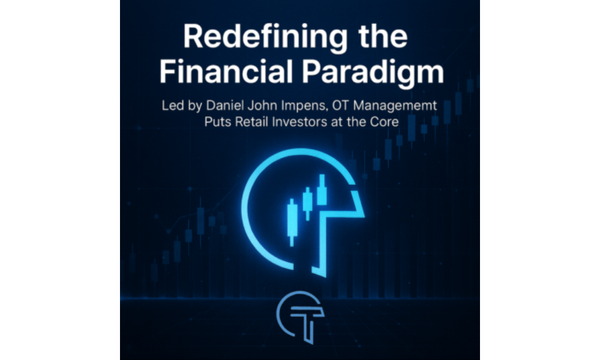Comparing USDC to Fiat-Backed Stablecoins Like Tether (USDT)
Introduction
Stablecoins have become an integral part of the cryptocurrency ecosystem, providing a way for investors to escape the volatility of the crypto markets while still benefiting from blockchain's advantages. Two of the most popular fiat-backed stablecoins are USD Coin (USDC) and Tether (USDT). Both are pegged to the US dollar and aim to maintain a 1:1 ratio. However, there are some key differences between these two stablecoins that are worth examining for those looking to invest in this asset class. This article will compare and contrast USDC and USDT across several factors including backing reserves, regulation, adoption, and controversies.
Transparency of Reserves
USDC prides itself on being transparent about its dollar reserves. The reserves are held in segregated accounts at US regulated financial institutions and attested to on a monthly basis by independent accounting firms. This level of transparency gives investors confidence that each USDC token is fully backed by $1.
USDT has been less forthcoming with proof of its reserves over the years. There have been questions raised about whether Tether actually holds sufficient dollar reserves to back all USDT in circulation at a 1:1 ratio. Tether points to assurance opinions from third party firms, but many argue these attestations lack the depth of USDC’s monthly reserve reporting. Overall, USDC appears to be the more transparent option when it comes to reserves backing the stablecoins.
Regulatory Compliance
USDC is fully compliant with US regulations. It is regulated as a registered Money Services Business with FinCEN and operates within the oversight of the NYDFS. The Centre Consortium that manages USDC’s reserves follows strict anti-money laundering (AML) and know-your-customer (KYC) policies. This regulatory compliance makes USDC appealing to more conservative, institutional investors.
Tether has a more complex history with regulators. While Tether claims to follow KYC/AML regulations, there have been questions around whether some USDT has been used to subvert capital controls in certain countries. Tether paid an $18.5 million fine in 2021 to the NYAG to settle allegations that it had misrepresented reserves. While Tether has strengthened compliance policies more recently, regulatory risk still feels higher with USDT versus the more compliant USDC.
Adoption and Use Cases
Both USDC and USDT enjoy wide adoption, but USDT remains the most used dollar-pegged stablecoin thus far. USDT is widely supported on major exchanges like Binance, accounts for a large share of stablecoin market cap, and has high daily trading volumes. However, USDC is gaining ground quickly. It's supported on popular exchanges like Coinbase and is being integrated rapidly by DeFi protocols and apps looking for safer, regulated stablecoin options.
In terms of use cases, both serve as hedging tools against crypto volatility, mechanisms for storing value, facilitating global payments, and on/off ramps between fiat and crypto. USDT's first mover advantage has given it an edge on network effects, but as concerns persist around Tether, USDC may be better positioned long-term, especially for integration with compliant institutions.
Controversies
USDT has been shrouded in controversy throughout its history. The big concerns have centered around whether Tether actually holds sufficient dollar reserves to back all outstanding USDT at a 1:1 ratio as it claims. Crypto exchange Bitfinex shares common ownership with Tether, raising conflict of interest issues. While Tether maintains it now has sufficient reserves, many remain skeptical of its past claims and disclosure practices.
USDC has avoided many of the controversies and doubts that plague USDT. The Centre Consortium’s commitment to transparency and compliance has prevented the types of allegations that Tether has dealt with. The regulatory standing of USDC also gives comfort to investors and businesses versus ongoing concerns about whether Tether will run afoul of authorities. While no stablecoin is 100% bulletproof, USDC appears to operate with higher standards versus chronic doubts around USDT’s reserves and compliance.
In summary, while USDT came first and enjoys larger market share today, USDC looks better positioned long-term with its transparent reserves, regulatory compliance, and integration into DeFi. However, both stablecoins will likely continue serving key roles in the growth of digital currencies.
Which Stablecoin is Safer – USDC or USDT?
When it comes to safety, USDC appears to have an edge over USDT. The higher standards of reserving, transparency, and compliance make USDC seem like a lower risk option versus lingering doubts around USDT. USDC reduces the chances of things like a run on reserves, regulatory enforcement, or investigations that have plagued Tether. Traders and investors concerned about minimizing stablecoin risks may want to favor USDC at this point until Tether can further improve disclosures and satisfy skeptics.
How Will Regulation Impact Future Use of These Stablecoins?
Increasing regulation of the crypto space is inevitable. This should benefit USDC versus potentially harming use cases for USDT. Since USDC already operates within US regulations, it should have an easier time adapting to new oversight and standards. USDT’s checkered past with regulators may make it harder for Tether to transition to a stricter regulatory environment. Tether’s global reach and penetration could also raise flags for authorities as they monitor capital flows. While regulation poses challenges to all stablecoins, USDC seems much better prepared through its commitment to transparency and compliance from the start.
In conclusion, while both USDC and USDT have carved out important roles in digital asset markets, USDC has some fundamental advantages that may allow it to emerge as the preferred fiat-backed stablecoin for discerning investors and institutions. However, only time will tell how much market share USDC can realistically gain versus the dominant incumbent USDT. Both stablecoins bring unique capabilities to the cryptoverse and will likely continue thriving in this rapidly evolving ecosystem.




